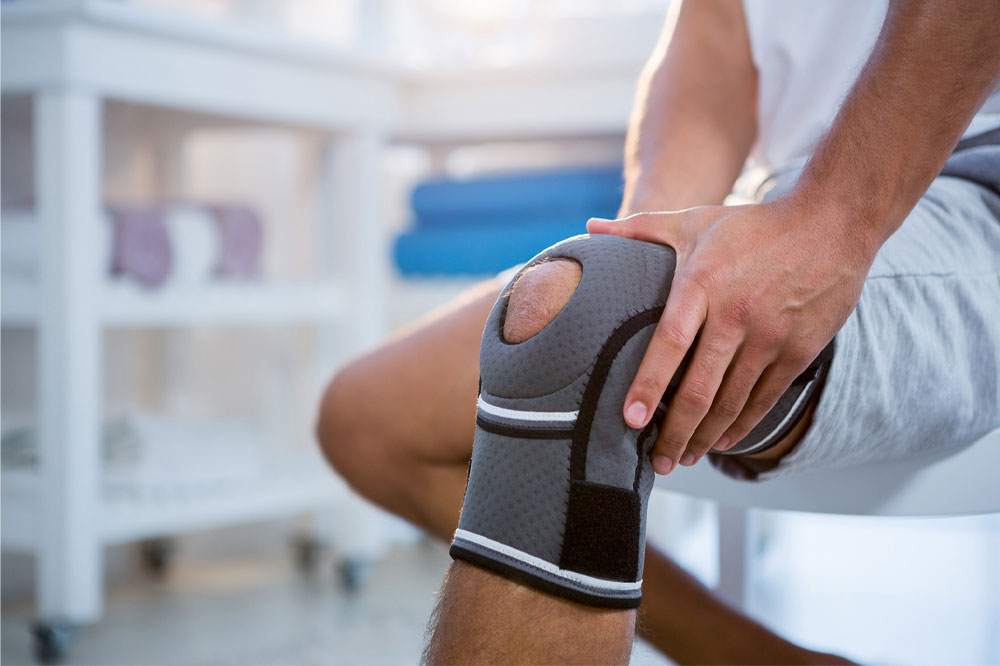
Know about the types of knee braces
The knee has many ligaments and tendons which provide stability to the joint. About 80 percent of body weight is exerted on the knee while standing, making it a high-risk area for injury, especially for athletes. A knee brace supports the joints, prevents injury, and reduces swelling or pain. There are many types of knee braces, each used for different reasons. Let’s understand the types and the ways to choose and wear a knee brace.
Prophylactic knee braces
This type is designed to protect the knees of people who play sports like football. Prophylactic knee braces are typically used to prevent injuries to the medial collateral ligament (MCL) when the knee is stressed or to provide stability for rotational stress. Additionally, it is used to give support to the anterior cruciate ligament (ACL) or posterior cruciate ligament (PCL) post-surgery or assist mild instability. Prophylactic controls knee hyperextension and augments proprioception. It is a great option for athletes who have previously suffered an MCL tear. Most prophylactic knee braces have unilateral or bilateral bars with hinges.
Choosing a prophylactic knee brace: While selecting this type of knee brace, opt for the one with the longest brace that fits the leg, as the shorter ones provide less MCL protection. Try on different options to see which fits you the best. There are custom knee braces available too, but they are expensive. Before putting on a prophylactic knee brace, make sure your legs are shaved to prevent unwanted slippage. While putting it on, always adjust the straps, and tape the fasteners to decrease brace migration.
Functional knee braces
A functional knee brace is ideal for providing support to the knee after it is injured. This type became famous after Joe Namath was spotted wearing them during his comeback football season. They are modeled to reduce knee instability of the ACL after injury. Earlier, they were used only by athletes who had knee problems and needed to make rapid direction changes during a sport. But now, functional knee braces are also recommended post-reconstructive surgery to reduce the strain on the ACL graft. Researchers have found that functional knee braces have few proprioceptive effects except for boosting confidence, but some patients have reported improvement in knee stability.
Choosing functional knee braces: Functional knee braces come in pre-sized and custom models. The pre-sizes are better for people who have to change limb girth during recovery. Both have a “hinge-post-shell” or a “hinge-post-strap” design, which differs in the thigh and calf enclosures. The hinge-post-shell uses plastic and foam, while the hinge-post-strap uses a system of straps. The former provides better stability, rigidity, and enhanced durability. Functional knee braces come in different lengths. Opt for the longest length. Setting the extension limitation to 10-20 degrees may minimize hyperextension of the knee joint.
Patellofemoral braces
The patellofemoral braces are designed to prevent lateral displacement of the patella, maintain patellar alignment, and therefore decrease pain. It is used to manage painful anterior knee syndrome, which probably originates from the patellofemoral joint. There is a mixed opinion about the effectiveness of a patellofemoral knee brace. Some studies have shown significant improvements, while others have found them ineffective. Regardless, patients typically report progress in the knee after wearing this type of knee brace.
Choosing a patellofemoral brace: There are several types on the market, but most of them use an elastic material such as neoprene and straps or buttresses that support the patella. Typically, customization is not needed for this type. An athlete may prefer a patellofemoral brace with a lateral hinge and adjustable buttress. To understand which size fits, you measure 3 inches above and below mid-patella or around the center of the knee joint with the leg relaxed and extended. Select the size (XS to XXL) accordingly. A patellofemoral brace must be worn interchangeably on either knee.
How to ensure to get the right fit?
To make sure your knee brace is fitted properly, try using “the two-finger” method. After determining your size, put the braces on and fasten the straps. If two fingers are not fitting under the strap, then the knee brace may be too tight for you. Loosen and adjust the strap and repeat the test. If two fingers slide easily, then fit a third finger under the strap. If the third finger fits, it’s perhaps too loose. Tighten it and try the test again. If you are still unsure about the fitting, walk around the knee brace and see how it feels. If it’s sliding down the knee, it’s too loose. The feeling of numbness or tingling sensation in your knee indicates that the brace is too tight. It is important to wear a knee brace after an injury or knee surgery. An unfit or improper knee brace can delay your recovery. Consult a healthcare provider if you are still confused about how to put them on.




